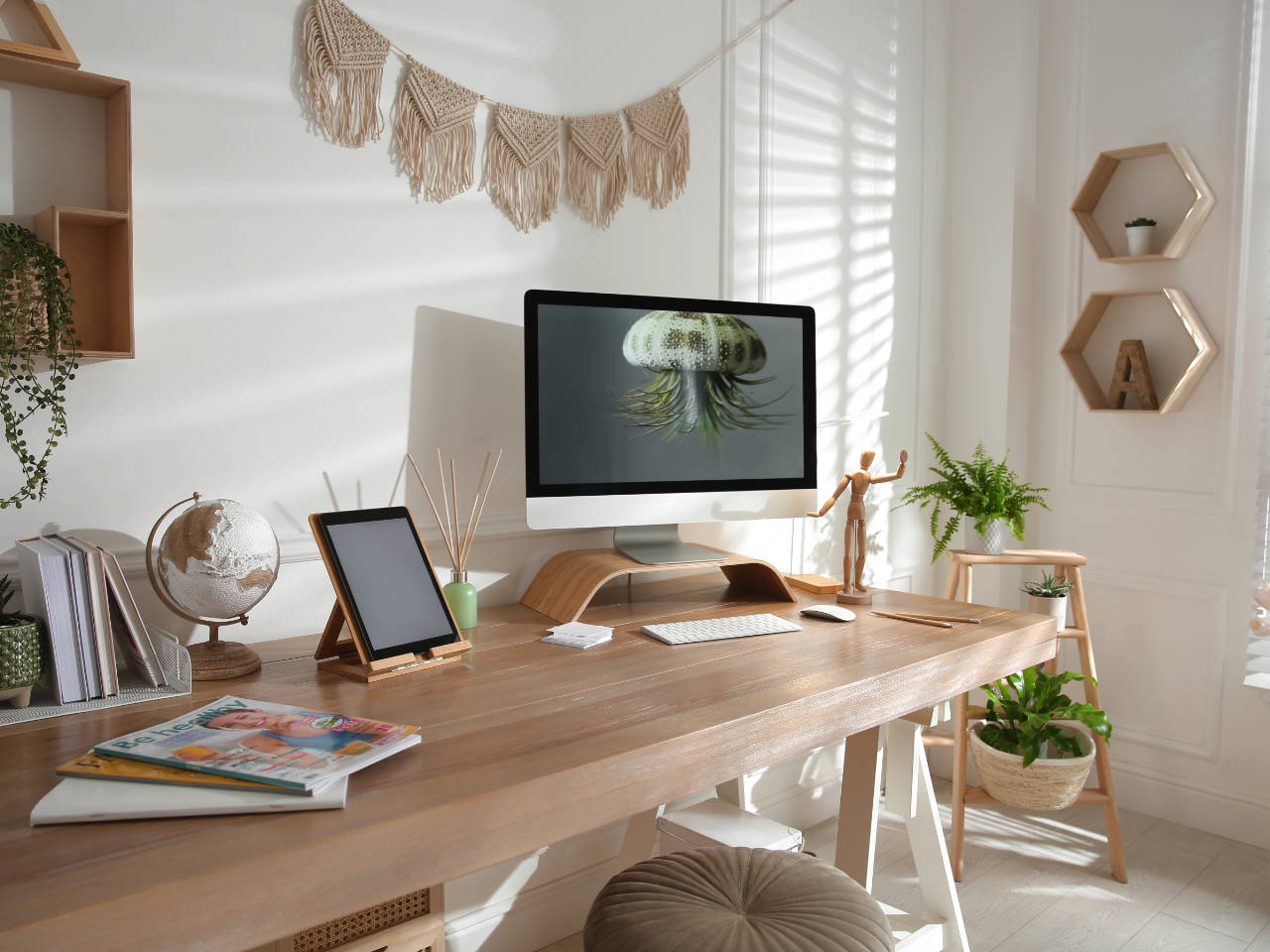
10 Jul Designing for Productivity: A Home Office that Works
Despite COVID-19 not being a pressing concern anymore, remote working has become a factor that has stuck due to the pandemic and is now regarded as the norm rather than the exception. Whether you’re a freelancer, a full-time employee, or an entrepreneur running a business from your living room, the design of a home office can make or break your productivity, and creating a workspace that fosters efficiency and creativity is crucial. Our guide dives into designing a home office that works for you.
1. Choose the Right Location
The first step in creating a productive home office is selecting the right location in your home. Ideally, your office should be in a quiet area with minimal distractions. Here are some factors to consider:
- Separate Space: If possible, dedicate a separate room to your office. It’s crucial to have a separate physical space to create a clear boundary between work and home life, which is crucial for maintaining focus and reducing stress.
- Natural Light: A workspace with natural light can significantly enhance your mood and energy levels. Ensure to position your desk near a window to take advantage of the daylight.
- Minimal Distractions: Choose a room away from high-traffic areas or with high distractions in your home. Avoid placing your work space near the kitchen, living room, or other noisy spots.
2. Invest in Ergonomic furniture.
Fun fact: comfort is key to productivity. Purchasing ergonomic furniture can prevent discomfort and long-term health problems. Consider obtaining some of these pieces of furniture:
- An Adjustable Chair: A good office chair can support your lower back and allow your feet to rest flat on the floor. Seek a chair with adjustable height, tilt, and lumbar support.
- A Desk: The height of your desk should allow your arms to rest comfortably at a 90-degree angle. Consider a standing desk or a desk converter if you prefer to alternate between sitting and standing.
- Monitor Setup: Your computer monitor should be at eye level to avoid neck strain, and consider using a monitor stand if necessary.
3. Optimise Your Layout
Your office’s layout can influence how efficiently you work. Here are some ideas on how to organise your space:
- Zone Your Workspace: Establish different zones for different activities. For example, have a dedicated area for computer work, another for paperwork, and a space for meetings or brainstorming sessions.
- Keep Essentials Close: Place items you use frequently, such as your computer, phone, and a notebook, within easy reach. Store less frequently used items in drawers or shelves.
- Declutter: A disorganised workspace can lead to a cluttered mind. To reduce distractions, keep your desk clean, tidy, and organised.
4. Personalise with Purpose
Your home office should inspire and motivate you while you’re working, in addition to being a functional space. Ensure that the interior design of your space is personalised with purpose. Some ideas include:
- Add Greenery: Plants can improve air quality and elevate your mood, as well as being an aesthetic piece. Choosing low-maintenance plants like succulents or peace lilies can make managing these plants easier.
- Incorporate Art and Decor: Decorate your office with artwork, photos, mementos, and items that inspire you. However, overloading your space with too many decorations can become distracting, so ensure it is not too overwhelming.
- Colour Psychology: Use colours that promote productivity. Green is believed to generate a serene and well-balanced atmosphere, whereas blue is known for enhancing focus. Consider these colours for your walls, furniture, or accessories.
5. Establish a Routine
A well-designed office is only one component of productivity. Developing a routine is equally prominent, and some ways to create this are:
- Set Office Hours: Define your working hours and adhere to them to create a clear distinction between work and personal time.
- Take Breaks: Schedule frequent breaks to prevent burnout. Use these breaks to move, including stretching, taking a walk, or meditating.
- Stay Organised: To keep track of your responsibilities and deadlines, use tools like calendars, planners, and task management apps.
6. Integrate Technology
Technology is a crucial component of a modern home office, relying on the internet at home. Here’s how to integrate it seamlessly into your space:
- Cable Management: To keep cords neat and hidden, purchase and use cable organisers. Wireless devices can also reduce clutter.
- High-Speed Internet: Invest in a quality router to ensure you have a reliable and fast internet connection
Designing a home office that works for you is a personalised journey to not only have a space that supports your professional needs but also nurtures your well-being. By carefully choosing your location, furniture, layout, and personal touches, you can create a workspace that enhances your productivity and makes working from home a pleasure rather than a chore. Regularly examine your workspace and make adjustments as your needs and preferences change. If you’re looking for help with designing your office space, contact us today so we can help create an inspiring and productive space for you to work in!

